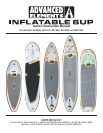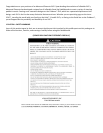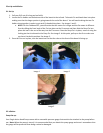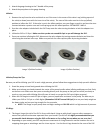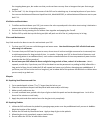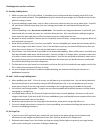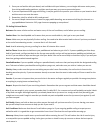
1. Attach the gauge housing to the T-Handle of the pump.
2. Attach the pump hose to the gauge housing.
Inflation
1. Remove the cap from the valve and check to see if the stem in the center of the valve is up (sticking up out of
the valve) or down (even with the inner rim of the valve). The stem of this valve must be in the up (inflate)
position to inflate the SUP. If the valve is not in the inflate position, use your finger to push in and turn the stem
counterclockwise a quarter turn and it will spring up into the inflate position. SEE IMAGES 3 AND 4.
2. Seat the valve adaptor included with the SUP Pump onto the valve turning clockwise to lock the adaptor into
place.
3. Inflate the SUP to 15.0 psi. Make sure that you do not exceed 18.0 psi or you will damage the SUP.
4. Once you are done inflating the SUP, disconnect the valve adaptor by turning counterclockwise and close the
valve using the attached valve cap. Make sure you lock the valve cap into place by turning clockwise.
Image 3 (Deflate Position) Image 4 (Inflate Position)
Inflation/Pump Use Tips:
Because you will be inflating your SUP to such a high pressure, please follow these suggestions to help you with inflation.
1. Stand the pump on hard level ground when inflating the SUP.
2. Make sure to keep your hands towards the center of the pump handles when inflating and keep your feet firmly
on the foot rests. Make sure that you are standing directly over the pump so that you can utilize your body as
much as your arms while inflating (this will come in handy as you get the SUP up to higher pressure).
3. When the SUP begins to reach 9.0 psi or higher, you may experience resistance in the pump. The best way to
inflate your SUP to 15.0 psi or a little higher (Remember DO NOT exceed 18.0 psi) is to use your body weight on
the down stroke and use your leg strength for the up stroke.
a. NOTE: The Gauge on your pump does not begin reading until 8.0 PSI which is a high amount of pressure.
3 D-Rings
1. The large d-ring at the tail of the SUP is for an ankle leash. Using an ankle leash is a great safety measure to
ensure that you will not become separated from your board if you fall off. It is highly recommended that you
use an ankle leash whenever using the SUP on flat water or for surfing, but not when you are on a river!
2. Depending on your model, your SUP may have an assortment of d-rings located in various locations for use in
strapping down gear or attaching a seat for sit-on-top use. Use the four d-rings located at the nose of the SUP



